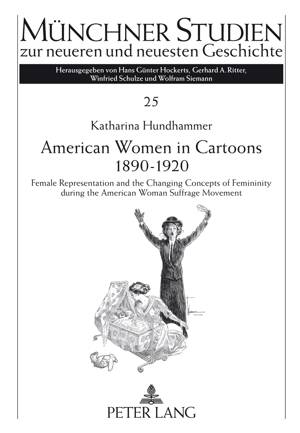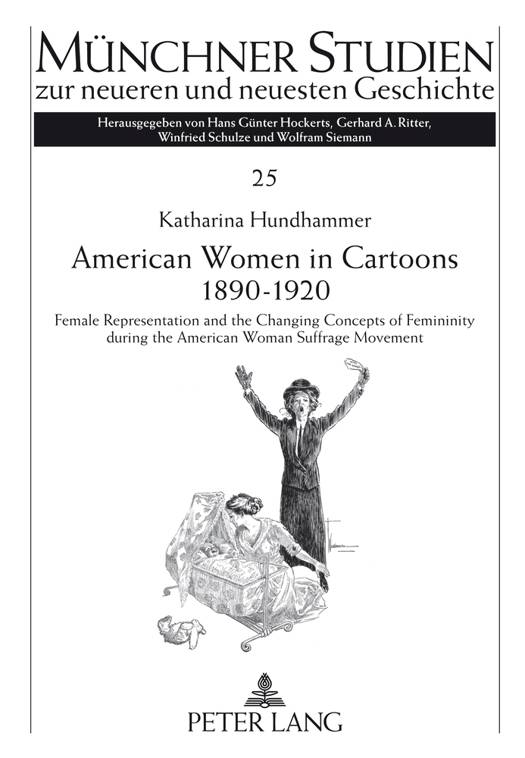
- Afhalen na 1 uur in een winkel met voorraad
- Gratis thuislevering in België vanaf € 30
- Ruim aanbod met 7 miljoen producten
- Afhalen na 1 uur in een winkel met voorraad
- Gratis thuislevering in België vanaf € 30
- Ruim aanbod met 7 miljoen producten
Zoeken
American Women in Cartoons 1890-1920
Female Representation and the Changing Concepts of Femininity During the American Woman Suffrage Movement- An Empirical Analysis
Katharina Hundhammer
€ 68,45
+ 136 punten
Omschrijving
Literature on the American woman suffrage movement is plentiful, but no work has systematically analyzed the visual aspect in the quest for woman suffrage. This publication fills this gap. Taking mid 19th century representations of women as a basis, it analyses political cartoons in three major woman's journals between 1910 and 1920 and distills the visual representation of women in the counterpublic sphere of the woman partisan press. The portrayal of women in political cartoons of three general interest journals during the same time period simultaneously helps to trace sociocultural changes in the general concept of femininity in early 20th century USA. Women's claim for suffrage not only asked for a political right. At the same time, the gender concepts of the day were being negotiated in a highly charged public discourse, in which the visual medium of the cartoon served as a particularly effective means of emotional persuasion. This book will appeal to students of Social History, Gender Studies and Media Studies as well as to the general interest reader.
Specificaties
Betrokkenen
- Auteur(s):
- Uitgeverij:
Inhoud
- Aantal bladzijden:
- 224
- Taal:
- Engels
- Reeks:
- Reeksnummer:
- nr. 25
Eigenschappen
- Productcode (EAN):
- 9783631637982
- Verschijningsdatum:
- 26/10/2012
- Uitvoering:
- Hardcover
- Formaat:
- Genaaid
- Afmetingen:
- 152 mm x 211 mm
- Gewicht:
- 408 g

Alleen bij Standaard Boekhandel
+ 136 punten op je klantenkaart van Standaard Boekhandel
Beoordelingen
We publiceren alleen reviews die voldoen aan de voorwaarden voor reviews. Bekijk onze voorwaarden voor reviews.











